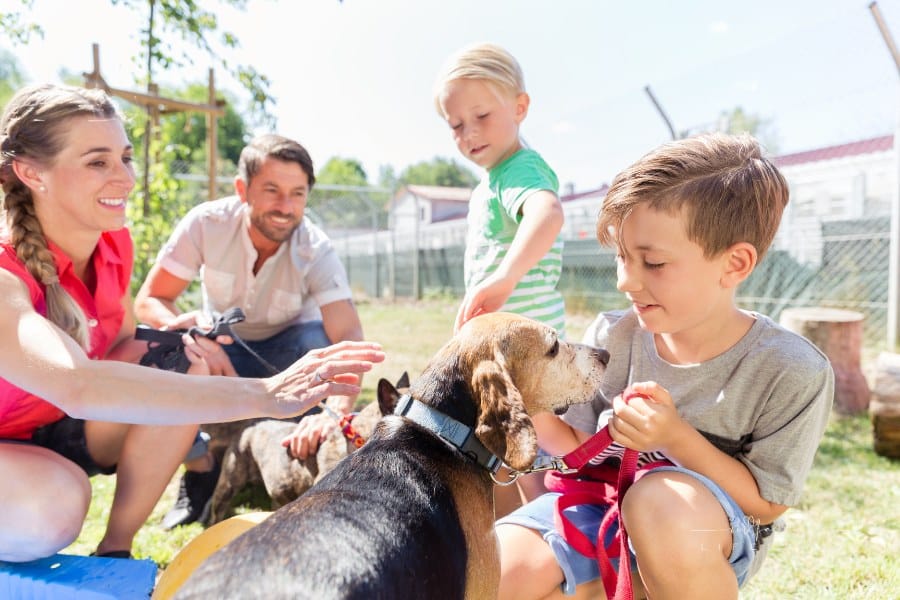Key Factors to Consider When Adopting Your First Family Pet
Welcoming a pet into your home is a joyful and transformative experience that can bring immense happiness and companionship to your family.
When considering adoption, it’s crucial to understand that this decision also comes with a significant long-term commitment and responsibility.
It involves careful consideration of your lifestyle, understanding the specific needs of different pets, evaluating your living environment, and thinking about the financial implications.
With the right preparation and mindset, adopting your first family pet can be the beginning of an extraordinarily fulfilling journey for both the animal you’re bringing into your home and your loved ones.

Assessing Your Lifestyle
Before bringing a new pet home, consider how your current lifestyle will accommodate the addition of a family pet.
Active families may enjoy the company of a high-energy dog who needs regular exercise, while a more sedentary lifestyle could be well-suited to a cat or a small mammal like a rabbit.
Think about your work schedule, activities, and the amount of time you can dedicate to nurturing and interacting with your new companion.
It is also important to assess the willingness of each family member to participate in pet care.
All responsibilities—from feeding to grooming to vet visits—should be understood and agreed upon.
If everyone is on board and the necessary time can be allocated for pet care, then you’re one step closer to expanding your family with a new furry friend.
You can find pet insurance with dental cover to ensure that your pet’s health needs are covered, making it easier to manage any unexpected costs.
It’s also important to consider how your lifestyle may change in the future, such as work or school schedules, before making a commitment to a new pet.
Understanding Pet Needs
Different pets have very different needs and characteristics. Dogs, for example, generally require more attention and exercise compared to cats.
Research breeds or species that interest you to learn about their care, temperament, and health issues.
This investment in knowledge will help you choose a pet that fits well with your family’s lifestyle.
Also, consider the age of the pet. Puppies and kittens may require more training and socialization, while older animals may be less demanding and often are already house-trained.
Whether you lean towards a purebred with predictable traits or a mixed breed from a shelter, understanding their needs is paramount in making the right choice for your family.
Evaluating Your Environment
Your living environment will greatly influence the type of pet that will thrive with your family.
For instance, larger dogs typically need more space and a safe outdoor area to play. Apartment dwellers might find a small pet or one that requires less room and exercise to be a more suitable choice.
Additionally, consider any allergies family members may have.
Pets like dogs and cats can trigger allergic reactions, so hypoallergenic breeds or different types of pets, such as reptiles or fish, might be better options.
Check also for any housing restrictions if you are renting, as some landlords do not allow certain types or sizes of pets.
Financial Considerations
The cost of pet ownership extends beyond the initial adoption fee. Prospective pet owners should budget for food, routine veterinary care, pet insurance, toys, and other supplies.
Unexpected expenses, such as emergency veterinary visits, should also be considered.
Be realistic about what you can afford, and research the average lifetime cost of caring for the type of pet you are interested in.
This foresight will ensure you’re financially prepared for the exciting but sometimes costly journey of pet ownership.
Matching Pets with Children
If you have children, it’s essential to consider their ages and maturity levels when selecting a pet.
Younger children may benefit from the companionship of a sturdy, gentle pet that can tolerate the unpredictable behavior of small kids. Older children can handle pets that are more delicate or require more sophisticated care.
Teach children how to interact with pets safely and respectfully, understanding that pets are not toys but living beings that need care and space.
A pet can be a great way to teach responsibility, empathy, and the joy of nurturing another life, as long as it’s the right match for your children’s ages and personalities.
The Commitment of Pet Ownership
Adopting a pet is a long-term commitment that can last for many years, depending on the type of pet you choose.
It’s about providing a forever home and a stable environment through various life changes, such as moving, having children, or facing personal challenges.
Committing to responsible pet ownership means pledging to care for your pet through sickness and health, ensuring they are a part of the family for the duration of their lives.
When you commit, you’re not just promising to feed and house your new pet—you’re promising to include them in your life and provide affection, stability, and companionship.
In conclusion, adopting a pet into your family is an exciting and rewarding decision that requires careful consideration.
By assessing your lifestyle, understanding pet needs, evaluating your environment, considering financial factors, and matching pets with children, you can find the perfect companion for your loved ones.


